- Home
- Larissa Ione
Apocalypse: The Lords of Deliverance Compendium Page 3
Apocalypse: The Lords of Deliverance Compendium Read online
Page 3
Imp—Around three feet tall, these demons are the worker ants of the underworld. By far the most common demons, they are treated more like beasts of burden than equals. They are thin, hunched over, with big heads and eyes that are disproportionately large for their faces. They eat anything they can put into their mouths. They breed like rats, giving birth to litters of four to eight young, most of which will not survive to adulthood, as they were considered a prey species by many demons. Harmless to humans. Ufelskala score: 1
Isfet—An unusual race of demons, all of whom are enslaved by the Neethul. A tall, thin species with unusually large eyes and long fingers, their skin changes color in reaction to their environment. They are unique in that they are incapable of learning the complexities of any language but theirs, and no one can speak their language fluently. Ufelskala score: 1
Judicia—Justice demons. Humanoid in appearance, with dark hair, green skin, and white antlers. Males always wear long beards. Females shave theirs. Some justice demons work within the Sheoul penal complex. Others are summoned by private individuals or species and breed councils for matters of justice. Justice demons possess the power of mind to inflict painful punishment as they see fit. Ufelskala score: 1
Khilesh devil—Looking like a cross between an alligator and a gorilla, this predatory species hunts in packs, often killing more than necessary. Their favorite food is Umber young, but they will kill any helpless demon unlucky enough to cross their paths. Khilesh devils live in Sheoul, but usually hunt in forests aboveground. Ufelskala score: 3
Khnive—Summoned demon tracker bound by its master to do his bidding until the spell times out. They smell strongly of decay, and resemble giant, skinless opossums. When not being forced to track, khnives roam Sheoul in packs, scavenging for other species’ leftover kills. Ufelskala score: 1
Lava beast—Elephant-size demons that live within volcanoes. They are the only known species that can survive exposure to hot lava. Orange-red and black in color, they can blend into cooling lava flows. Thought to be the physical incarnation of evil humans killed in natural disasters, lava beasts feed on the negative energy produced by a volcano’s destruction. Ufelskala score: 3
Leonine beast—Believed to be the first demons created as a cross between humans and animals. Some demon scholars are certain leonine beasts are the result of a failed attempt at creating lion shapeshifters. Whatever their origins, they resemble lions, but are capable of walking upright. None exist in the wild—these creatures are kept only as pets by the most wealthy and powerful demon lords. Ufelskala score: 2
Mamu—An Australian desert-dwelling species of man-eating, shapeshifting demon. These tall, pointy-headed ugly demons hunt for solitary humans. They can disguise themselves in many forms, from animal, human or inanimate object. Crude clubs are their weapons of choice. Ufelskala score: 5
Mara—Humanoid demons that can reside in either the human or demon realm. Voracious carnivores, these demons are responsible for negatively impacting the human realm’s animal population through massive poaching. When threatened or hunting, they sprout an extra set of sharp teeth, and their jaws unhinge for greater bite damage. Each Mara is a carrier of a disease unique to that individual… which means that the antidote resides with him as well. Ufelskala score: 4
Moraki—Spiderlike demons the size of a small car. Their bodies consist entirely of bone and teeth, and the clacking noise they make is said to drive some demons mad. Their bones are coveted as weapons—a club made from a Moraki’s leg can fetch top dollar at any demon market. Being struck by a Moraki-bone weapon renders most victims temporarily confused to the point that they will attack their own allies in battle. Ufelskala score: 3
Nebulous demon—These rare, malevolent spirits suck souls out of humans. They are shapeless, appearing as patches of fog or steam. Some breeds take only the souls of those who are comatose, while others prey mostly on children, the mentally ill, and the elderly, leaving them alive, but with no sense of right and wrong. The human souls are stored within the demon, providing it energy for as long as the human body lives. The souls can only be freed by killing the demon. Ufelskala score: 4
Neethulum—An extremely intelligent and cruel race who breed, raise, train, and sell other species as slaves and food. Their uncommon beauty has given rise to the rumor that they are descended from fallen angels. They reside wherever they want to within the vast confines of Sheoul. Ufelskala score: 5
Nightlash—Humanoid, with clawed feet and sharp teeth. Very tall, often topping seven feet. They will eat anything they can catch, and they hunt in family packs, mainly because they are all inbred. There are no social taboos with these demons. They reside only in Sheoul, usually the colder regions, but they consider all of Earth their hunting ground. Ufelskala score: 4
Null—The rarest of demons, void of life and souls. They exist as shadowy creatures with gaping maws and jagged teeth. Often bound to demon holy places, there is no known weapon against them. Ufelskala score: 4
Obhirrat—Among the most hideous, vile demons in existence. At around seven and a half feet tall, these snouted beasts have foot-long claws they click together when agitated, beady, red eyes, snakelike tongues. Their skin is transparent, revealing their primary means of defense: flesh-eating maggots that squirm constantly beneath the skin. Few can look upon an obhirrat without becoming nauseous. Ufelskala score: 3
Oni—These rather stupid demons are troublemakers. The party animals of the underworld, they eat, drink, and have sex to excess. Onis may live in the human realm or the demon one, but they are always present at the sites of natural disasters, and they love to hang out in places where diseases reach epidemic proportions. Ranging in size from half that of a human to three times the size, they also vary in color, from pale peach to bright pink to blue. Their three fingers and toes on each hand and foot end in sharp talons. They boast three eyes, a flat face, and a gaping mouth full of fangs. Ufelskala score: 3
Ramreel—Rumored to have been created from human and goat stock, these burly, small-eyed demons with curled horns tend to make their living by hiring themselves out as guards. As small kids, they train with blade weapons, giving them a head start in the crowded but lucrative security market. Ufelskala score: 2
Rusalka—Freshwater species that can shapeshift into fishes and frogs. Rusalkas are female, pale green in color, with green hair. They are perpetually lonely, and they lure human men into the water to mate with them. Unfortunately, their partners always drown after they give up their seed, leaving the Rusalkas lonely once more—that is, until their eggs hatch nine months later. Despite the fact that they always kill their partners, Rusalkas are not evil; they never intend to drown their partners, and they always forget that it happened, so they can’t learn from their mistakes. Ufelskala score: 1
Seminus—A rare, specialized breed of incubi. Members of the breed are exclusively male, with the exception of a half-breed named Sin, who is the only known female Seminus. As a ter’taceo species, they appear human. As incubi, they are always attractive, and their sexual pheromones can loosen up even the most prickly females. At one hundred years old, Seminus demons gain the ability to shapeshift and impregnate females of other species through a maturation process called s’genesis, which also causes them to lose any sense of compassion and rationality unless they are bonded to a life mate. Because individual Seminus demons are raised by different species, their Ufelskala scores vary wildly. Ufelskala score: Varies
Sensor—Ter’taceo demons who live and work with humans in order to seek out and destroy the infant half-breed offspring of humans and demons. Though their natural form is humanoid, their skin begins to deteriorate after too much time in the human realm. They must return to Sheoul every six months to endure a two-week regeneration ritual. Ufelskala score: 2
Shapeshifter—Shapeshifters (as their own distinct species, as opposed to a demon who can shift his shape) are human-animal hybrids and differ from weres in two main ways: 1) Shapeshifters turn into true animals,
not human-beasts; 2) Shapeshifters can shift at will and are not affected by the full moon. All true shifters have a telltale birthmark, a red, star-shaped mole behind the left ear. According to the Daemonica, the demon bible, shapeshifters, like turned weres and vampires, have human souls. Ufelskala score: Varies
Silas demon—The mercenaries of the underworld. These pale white, eyeless demons live in Sheoul, in large communities where no other species is allowed. They sell their war services to the highest bidders as groups, not individuals, and they will destroy anything and anyone they are paid to kill. Their clothing is made entirely of the hides and skins of their victims. Ufelskala score: 4
Skullboar—Named because this carnivorous piglike creature’s head resembles a skull covered by only a thin layer of gray skin, the skullboar is a favorite game animal in the soggier forests of Sheoul. Its body is protected by inch-long quills that, if used as weapons, will burrow deeply into the victim’s flesh until they reach a vital organ. Killing and dressing these creatures requires skill—and protective armor. Tastes like chicken! Ufelskala score: 1
Slogthu—Apelike demons with long, tufted ears. They often have exaggerated underbites, overgrown lower fangs, and patchy fur. A cold-weather species, they live high up in mountains or in icy regions of Sheoul. They are extremely dexterous, famous for their finely woven garments and rugs. Omnivores, they prefer their meat cooked. Ufelskala score: 1
Sora—Red-skinned, attractive, black hair and tiny black or white horns that change shade with their mood. Often described as looking like cartoon devils. Very sexual beings, they rarely form pair-bonds and usually have multiple partners composed of several species, though they can only breed with their own kind. Ufelskala score: 1
Soulshredder—Both feared and respected throughout Sheoul, Soulshredders are vicious even by demon standards. They feed off pain, misery, and terror. They rarely kill outright, instead spending years, even decades, haunting and torturing their victims. They resemble skinned gargoyles, with membrane-thin wings, serrated talons on red, scaly paws, and barbed penises. Ufelskala score: 5
Spiny hellrat—Similar in size to muskrats, these scavengers populate Sheoul by the millions. Supposedly tasty, they are considered by many demons to be food only “poor demon trash” would eat. Their spines, about as long and thick as a hedgehog’s, are venomous, as is their bite. Ufelskala score: 1
Trillah—A sleek, catlike species. Tall, toned, and graceful, they have bronze skin in the summer and a velvety coat of golden fur in the winter. One of the few non-ter’taceo species visible at all times to humans, they were forced into Sheoul when the human population grew too large for Trillahs to remain out in the open. Though Trillahs are not evil, they resent mankind for their banishment to Sheoul. Ufelskala score: 1
Umber—Humanoid bodies with gray skin, charcoal hair, and gunmetal eyes. Very gentle, cave-dwelling species. They are good judges of character, having a natural ability to sense evil and good inside someone, and depending on their level of skill, Umbers can lessen or even remove the darkness-guilt that weighs an individual down. Ufelskala score: 1
Vampire—It is believed that vampires were created from fallen angels. Any vampire may turn a human into a vampire, but after a population explosion in the Dark Ages, followed by a vampire civil war, the Vampire Council was formed, and rules were created to regulate not only turnings, but behavior in general. Many of the popular vampire legends are true, but vampires do not believe that their souls are doomed. They live with the belief that if they willingly walk into the morning sun, their souls will be carried to Heaven for judgment before God. However, any vampire killed in any other manner is doomed to suffer eternal torment in Sheoul-gra. Ufelskala score: Varies
Subspecies: Daywalker—The existence of vampires who can walk in the daylight has not been confirmed, but reports of these vampires have been increasing, most notably since Pestilence’s Seal broke. RUMOR ONLY.
Vapor wraith—Ghostlike demons whose origins and habitats are unknown. They are never seen except when bound by a spell to an object, usually Harrowgates. Their height can vary from twelve feet tall to fifty feet and they have a mouthful of shark-sharp teeth and claws that can grow up to seven feet in length. Ufelskala score: 3
Viper ghoul—Ill-tempered, nasty, man-size reptile that resembles a cobra that has been dead for a month. Viper ghouls are easily controlled by sorcery, and are often summoned by humans who play with black magic without fully grasping its power. The results can be deadly. Ufelskala score: 2
Were-beasts—Weres are humans who shift only during the three nights of the full moon. They turn into large, two-legged, furry beasts with both human and animal features. Only a few species of were-creatures are known to exist: werewolves (who call themselves wargs) werebears, and wereleopards, though werewolves are the most common. There are two classes of were-beasts; those who are born weres, and those who are turned after being bitten. Born weres, especially wolves, tend to live in packs, while turned weres usually lead solitary existences. There are rumors of a rare breed of werewolves called feast wargs, who change during the new moon instead of the full moon. It’s said that feast wargs were bred by demons to hunt regular wargs. Ufelskala score: Varies
Q&A with Larissa
I love getting questions from readers, so when I decided to put together this compendium, I asked my readers what they wanted to know. Here are some of the questions I get asked the most, as well as a couple of curveballs!
What was the hardest book to write and why?
That would be a tie between Ecstasy Unveiled and Lethal Rider. Ecstasy Unveiled got off on the wrong foot and required a complete rewrite, so that was definitely a difficult book to write (and write again). Plus, I had to do much of the work during a move from Virginia to Wisconsin. My husband drove while I sat in the passenger seat with the laptop! Lethal Rider put me through the wringer in part because, with so many ends to tie up and there was so much going on in the book, and in part because I had a very difficult relationship between the hero and heroine to deal with.
How often do you change your hair color? Do you have a hobby or interest not related to books or animals?
I change my hair color whenever I get bored. Which is a lot! As far as my hobbies, I love role-playing video games of the Dungeons & Dragons sort. I also like to bowl, watch movies, and camp (as long as my husband does all of the work, like cooking). Oh, and I love to travel! Hubby and I are planning a month-long European vacation after he retires from the Coast Guard. I can’t wait!
How did you come up with the Demonica and Horsemen symbols?
The Demonica symbol came about because I wanted something similar to the medical caduceus that’s familiar to people worldwide. But since the symbol would be used for an underworld hospital, I needed it to be a little more… sinister. Enter author Amy Knupp and her fabulous husband, Justin. He designed the caduceus according to my specs, and voilà, we had a symbol! For the Horsemen symbol, I went to my husband, who, besides being an officer in the U.S. Coast Guard, is a talented artist with publishing credits of his own. He based each of the four horse heads on each of the Horsemen, and though the design was simplified for publication purposes, it still made it onto the covers. I’m very proud of him!
Would you consider writing a book featuring the Demonica kids as they grow into teens?
Tempting, very tempting! Actually, I have thought about how it could be done… writing books for them when they become adults. Right now, it’s just in the processing center of my brain because I need some time away from them (they’re still babies to me) but you never know!
What is your favorite book you’ve written?
Ooh, it’s a three-way tie here! I adored writing Unleashing the Storm, my Sydney Croft (with author Stephanie Tyler) alter ego. When authors say that a book “writes itself,” I used to scoff. (And maybe curse them a little.) But Unleashing the Storm really did write itself. I can’t believe how fast we wrote it and how well it came together. The other t
wo favorites are Passion Unleashed and Rogue Rider. They were just really easy to write. I’ve discovered that writing men who are scoundrels creates a very pleasant author experience!
Which of your female leads is your favorite? Who is your favorite heroine and why?
Hard question, because I genuinely love all my heroines when I’m writing them, though some are easier to write than others. Kira from Unleashing the Storm is a favorite because she’s such an animal lover, and I also love Sin and Limos a lot. I’ve found it interesting that those two heroines (plus Tayla) who I loved writing the most, are the ones that many readers like the least!
What is your all-time favorite book and why?
Eek! This is a hard question, but after much consideration, I’m going to go with The Eye of the World by Robert Jordan. It’s genius. Dark and scary, and yet fantastical and fun. The entire Wheel of Time series is amazing, and I re-read it every time a new one comes out. I love it so much that I’ve had to buy The Eye of the World several times because I keep loaning it out and never getting it back!
I’m curious about your writing process. Do you write the main plot points down first and then go back and fill in between, or do you usually write a book straight through, start to finish?
Sometimes I think I’m the only author in the world without a process. I really don’t have one. I write every book using a different process. In general, I write the scenes in my head that are calling to me, and then I fill in around them. I start out with an outline, but I’m terrible at plotting, and the book never turns out like the outline says it should!
How do you handle criticism of your work?
I’ll be honest… it’s not always easy. It was worse in the beginning, but thankfully I’ve developed a thicker skin. In the past, a bad review would paralyze me for days. Now I’m over it in a couple of hours, if that. Unless the review is special in some way—sent to me with the intent of hurting my feelings/is a personal attack/is from a reader who has previously loved the other books but is now disappointed (I hate disappointing readers!), et cetera. But for the most part, I cope by not reading them. As a new author, I read all the Amazon reviews, all the blog reviews, I pored through Goodreads… yeah, not healthy at all. Lesson learned, and for my own mental health, I stay away now!

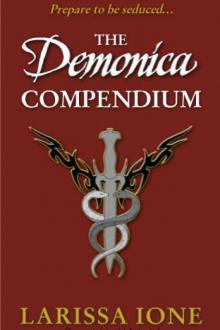 The Demonica Compendium
The Demonica Compendium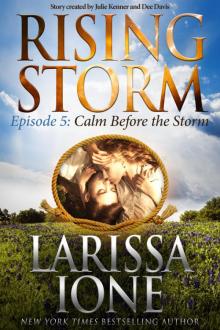 Calm Before the Storm Kobo
Calm Before the Storm Kobo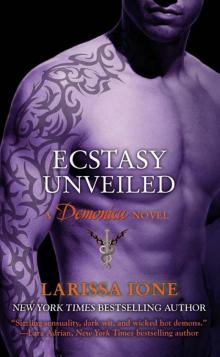 Ecstasy Unveiled
Ecstasy Unveiled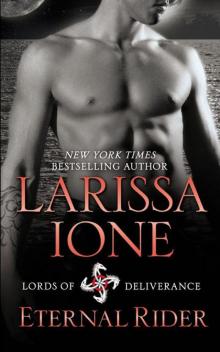 Eternal Rider
Eternal Rider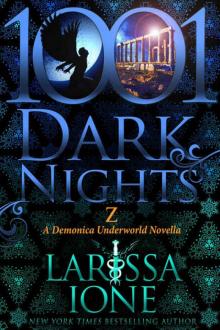 Z
Z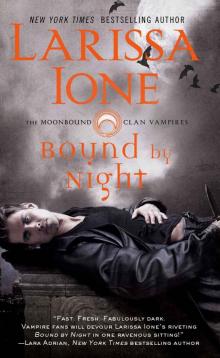 Bound by Night
Bound by Night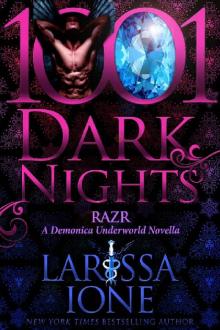 Razr
Razr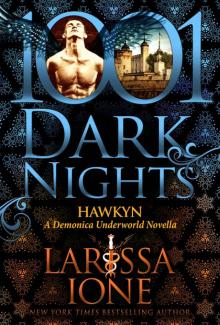 Hawkyn
Hawkyn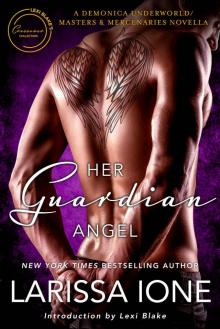 Her Guardian Angel_A Demonica Underworld/Masters and Mercenaries Novella
Her Guardian Angel_A Demonica Underworld/Masters and Mercenaries Novella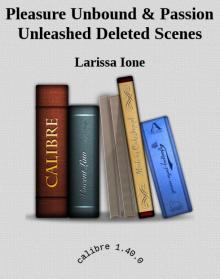 Pleasure Unbound & Passion Unleashed Deleted Scenes
Pleasure Unbound & Passion Unleashed Deleted Scenes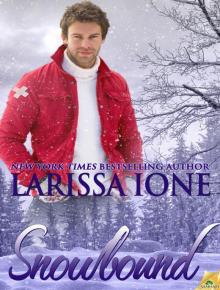 Snowbound
Snowbound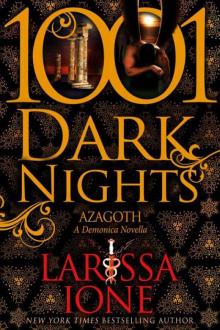 Azagoth
Azagoth![[No data] Read online](http://i1.bookreadfree.com/19/[no_data]_preview.jpg) [No data]
[No data]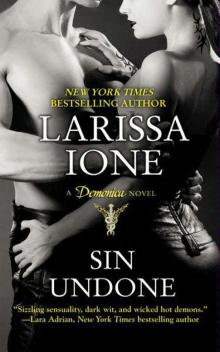 Sin Undone
Sin Undone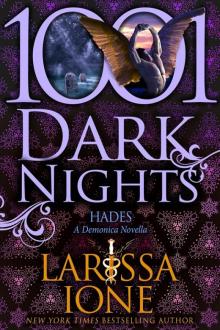 Hades
Hades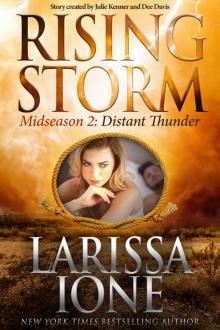 Distant Thunder
Distant Thunder Reaver
Reaver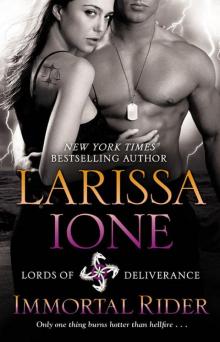 Immortal Rider
Immortal Rider Desire Unchained
Desire Unchained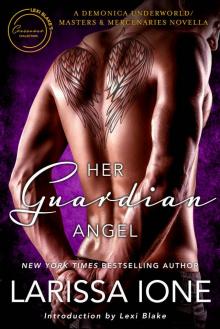 Her Guardian Angel
Her Guardian Angel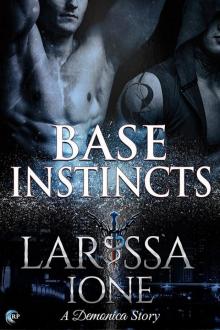 Base Instincts
Base Instincts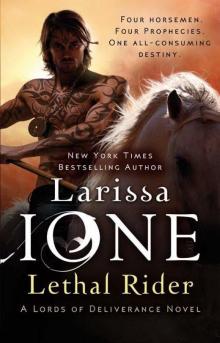 Lethal Rider
Lethal Rider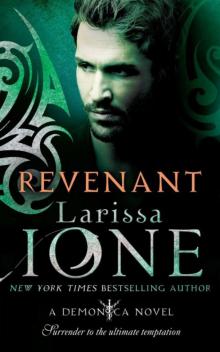 Revenant
Revenant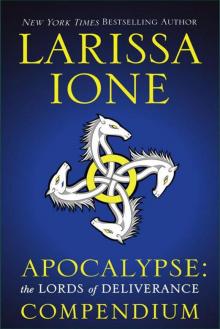 Apocalypse: The Lords of Deliverance Compendium
Apocalypse: The Lords of Deliverance Compendium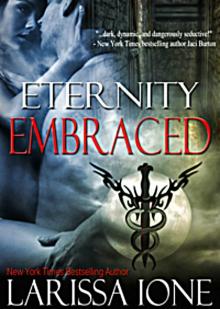 Eternity Embraced
Eternity Embraced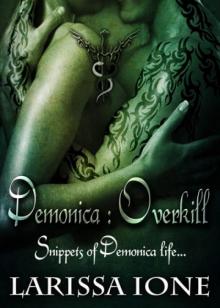 Overkill: Snippets of Demonica Life
Overkill: Snippets of Demonica Life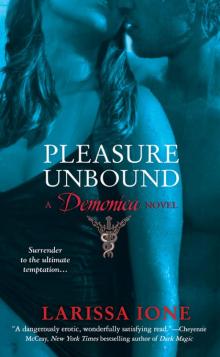 Pleasure Unbound
Pleasure Unbound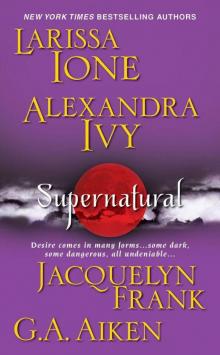 Supernatural
Supernatural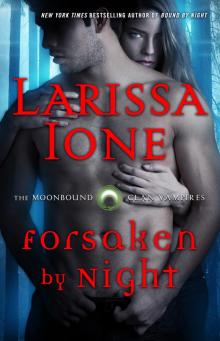 Forsaken by Night
Forsaken by Night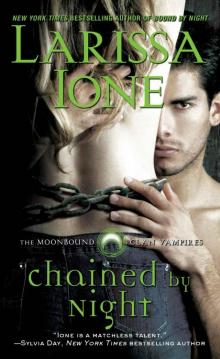 Chained by Night
Chained by Night Storm Warning, Season 2, Episode 2
Storm Warning, Season 2, Episode 2 Bloodlust
Bloodlust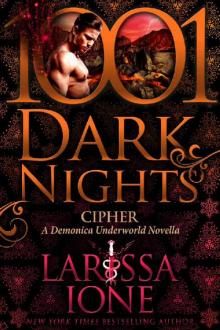 Cipher: A Demonica Underworld Novella
Cipher: A Demonica Underworld Novella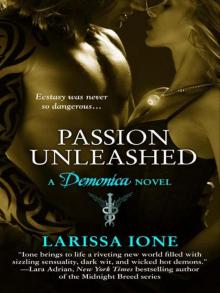 Passion Unleashed
Passion Unleashed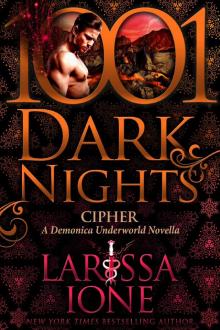 Cipher
Cipher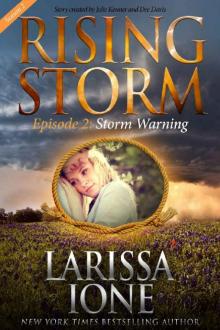 Storm Warning, Season 2, Episode 2 (Rising Storm)
Storm Warning, Season 2, Episode 2 (Rising Storm) Immortal Rider lod-2
Immortal Rider lod-2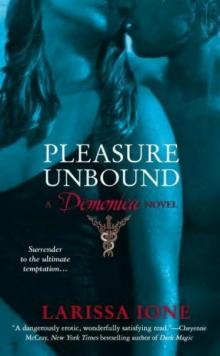 Pleasure Unbound d-1
Pleasure Unbound d-1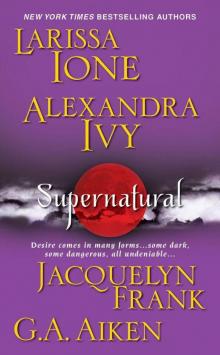 Vampire Fight Club (supernatural)
Vampire Fight Club (supernatural)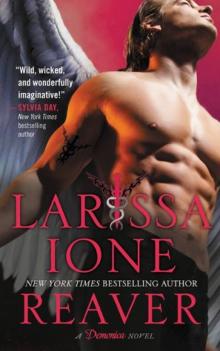 Reaver lod-5
Reaver lod-5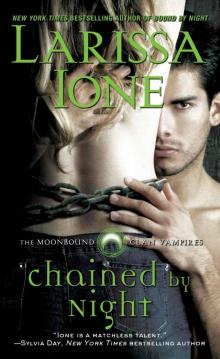 Chained by Night (The Moonbound Clan Vampires Book 2)
Chained by Night (The Moonbound Clan Vampires Book 2) Demonica Overkill
Demonica Overkill Sin Undone d-5
Sin Undone d-5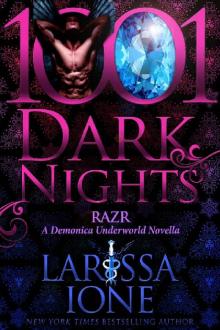 Razr: A Demonica Underworld Novella
Razr: A Demonica Underworld Novella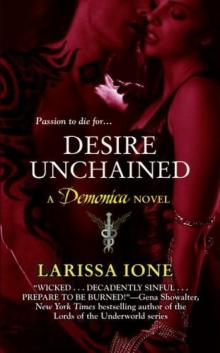 Desire Unchained d-2
Desire Unchained d-2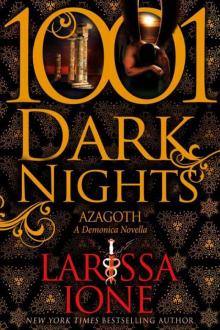 Azagoth: A Demonica Novella (1001 Dark Nights)
Azagoth: A Demonica Novella (1001 Dark Nights)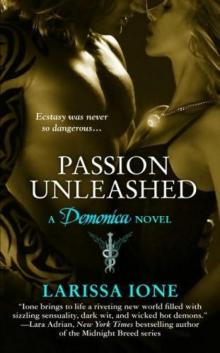 Passion Unleashed d-3
Passion Unleashed d-3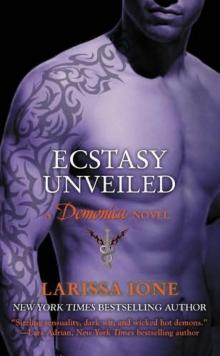 Ecstasy Unveiled d-4
Ecstasy Unveiled d-4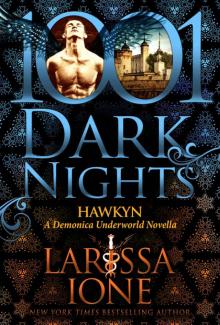 Hawkyn: A Demonica Underworld Novella
Hawkyn: A Demonica Underworld Novella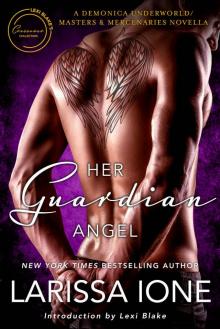 Her Guardian Angel: A Demonica Underworld/Masters and Mercenaries Novella (Lexi Blake Crossover Collection Book 2)
Her Guardian Angel: A Demonica Underworld/Masters and Mercenaries Novella (Lexi Blake Crossover Collection Book 2)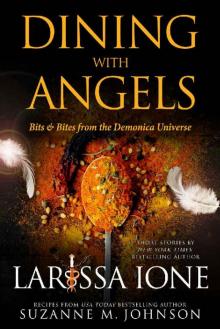 Dining with Angels: Bits & Bites from the Demonica Universe
Dining with Angels: Bits & Bites from the Demonica Universe Lethal Rider lod-3
Lethal Rider lod-3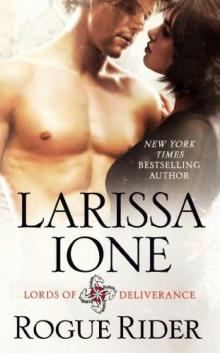 Rogue Rider lod-4
Rogue Rider lod-4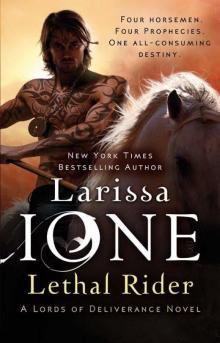 Lethal Rider_Lords Of Deliverance
Lethal Rider_Lords Of Deliverance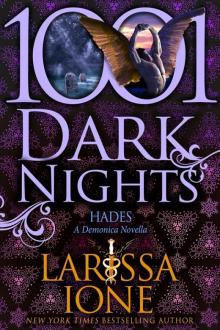 Hades: A Demonica Novella (1001 Dark Nights)
Hades: A Demonica Novella (1001 Dark Nights)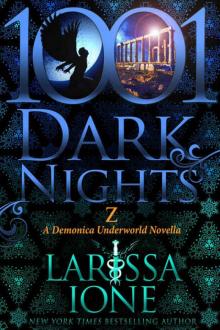 Z: A Demonica Underworld Novella
Z: A Demonica Underworld Novella Distant Thunder: Midseason Episode 2 (Rising Storm)
Distant Thunder: Midseason Episode 2 (Rising Storm)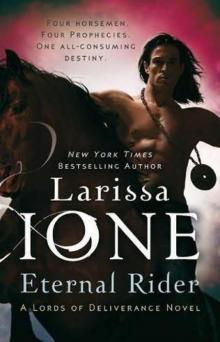 Eternal Rider lod-1
Eternal Rider lod-1